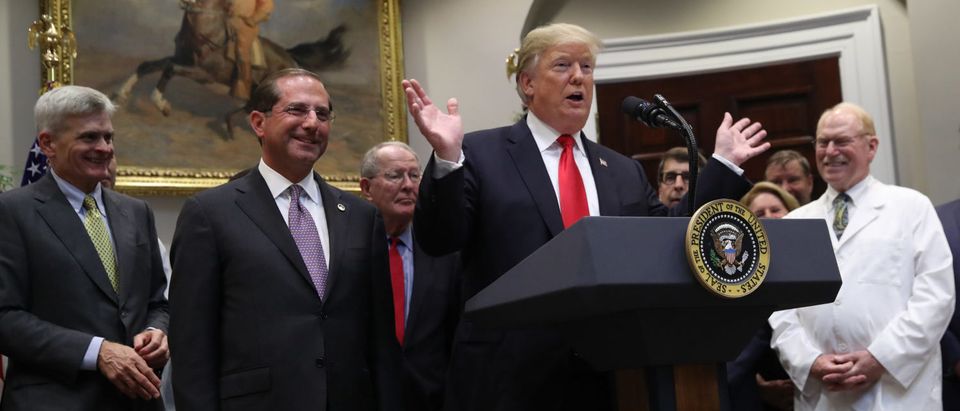Prescription drug prices are falling under the Trump administration, according to a new report released by the White House Council of Economic Advisers (CEA).
Multiple media outlets, using different methodologies for measuring changes in prices, have reported that drug prices are increasing
As of September 2019, the Consumer Price Index (CPI) for prescription drugs was down 2.3% over the previous 12 months.
Longer trends show the rate of prescription drug prices increasing at a consistently slower rate since Trump’s inauguration, and then eventually decreasing in December 2018. With one slight exception in July 2013, that was the first time prescription drug prices fell under the CPI since August 1973. (RELATED: Trump Touts ‘Single Largest Decline’ In Drug Prices In Nearly 50 Years)
Great news for American patients! Prescription drug prices FELL again last month and are now 2.3% below their peak. Increased generic drug approvals under @realDonaldTrump continue driving price reductions. Read our recent report on falling prices: https://t.co/9fUT3MhB2J pic.twitter.com/FYBqqH4Vmi
— CEA (@WhiteHouseCEA) October 10, 2019
The CEA’s findings differ from recent articles in The New York Times, Politico, and other outlets that claim prescription drug prices are increasing.
The Trump administration explains the discrepancy by pointing to methodological differences in how the Bureau of Labor Statistics and the media measure changes in drug prices.
A senior administration official told the Daily Caller the following:
“According to the Bureau of Labor Statistics, the prices consumers pay for prescription drugs at the pharmacy counter are indeed going down for the first time in 47 years. The Trump Administration neither created this statistic nor is the first administration to track it. CPI-Rx has been around since 1969, and it is widely considered one of the best tools available to measure change in drug prices.”
The CPI for prescription drugs takes a random sample of prescription drugs and weighs the change in price based on how commonly each drug is prescribed. This methodology, the White House argues, shows a more accurate measure of the change in drug prices for the average American household.
Comparatively, the data used more commonly by media outlets merely compares how many drugs saw price increases versus how many saw price decreases.
“These comparisons can be misleading, because some drugs are widely used and others are rarely used. For the typical household, what matters are the changes in the prices of the most commonly prescribed drugs,” a CEA primer on the CPI for prescription drugs, states. “For example, even if prices are increasing for a large number of rarely prescribed drugs, the CPI-Rx can show an average decrease if the prices of the most commonly prescribed drugs are decreasing.”
The administration points to the increase in approvals by the Food and Drug Administration (FDA) for both brand name and generic drugs as one factor for the decline in prices.
“Because the FDA determines that a generic drug has the same active ingredient as the brand name drug and is bioequivalent to the brand name drug, typically many consumers switch to the generic version and pay a much lower price,” the CEA says.
The Trump administration has also previously touted a plan to allow for safe importation of drugs from other countries, something a senior administration official said is still on the table and could help lower prices. The president also said in July that he plans to issue an executive order that would prohibit drug companies from selling their product in the U.S. at higher prices than in other countries.


